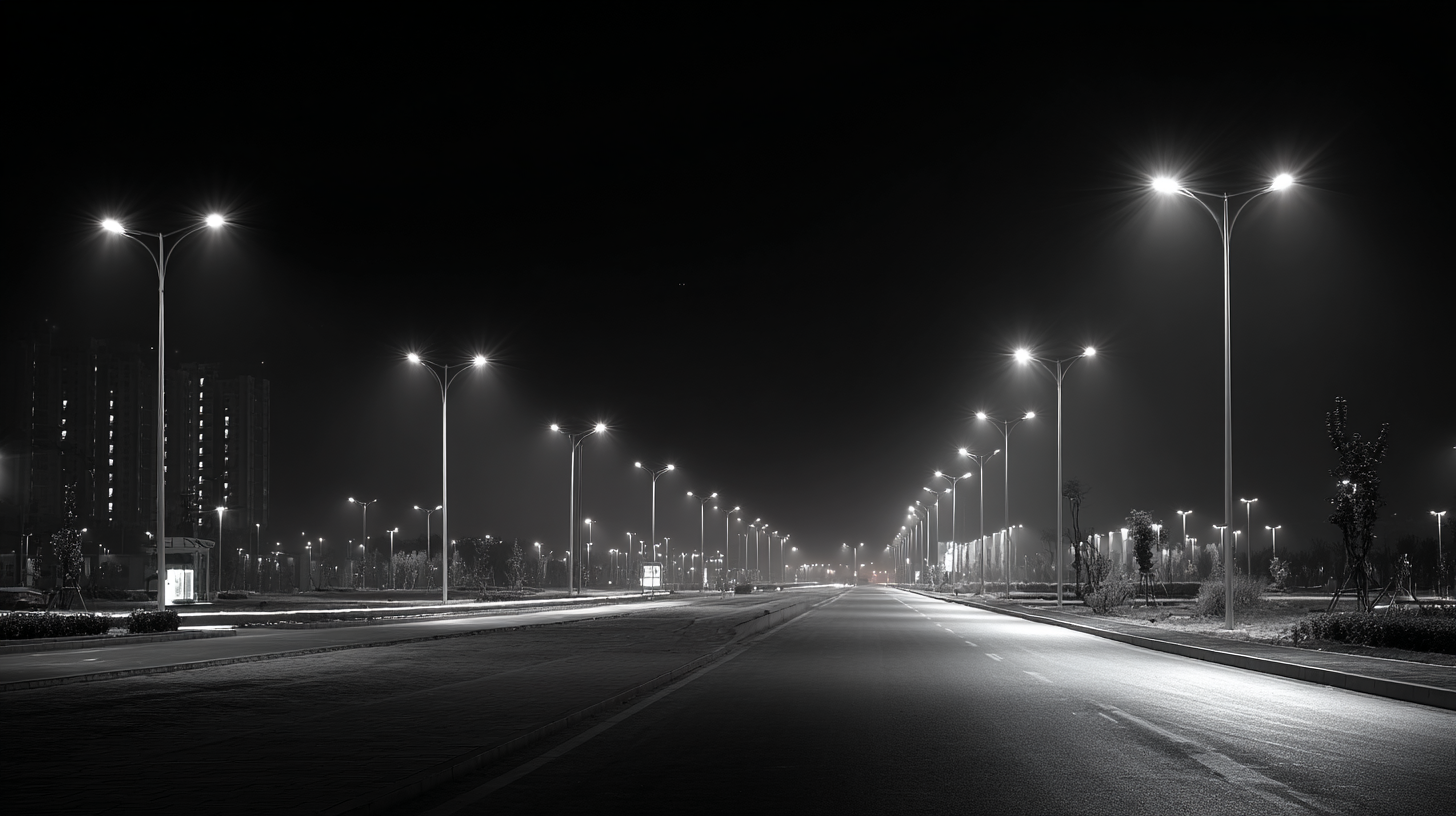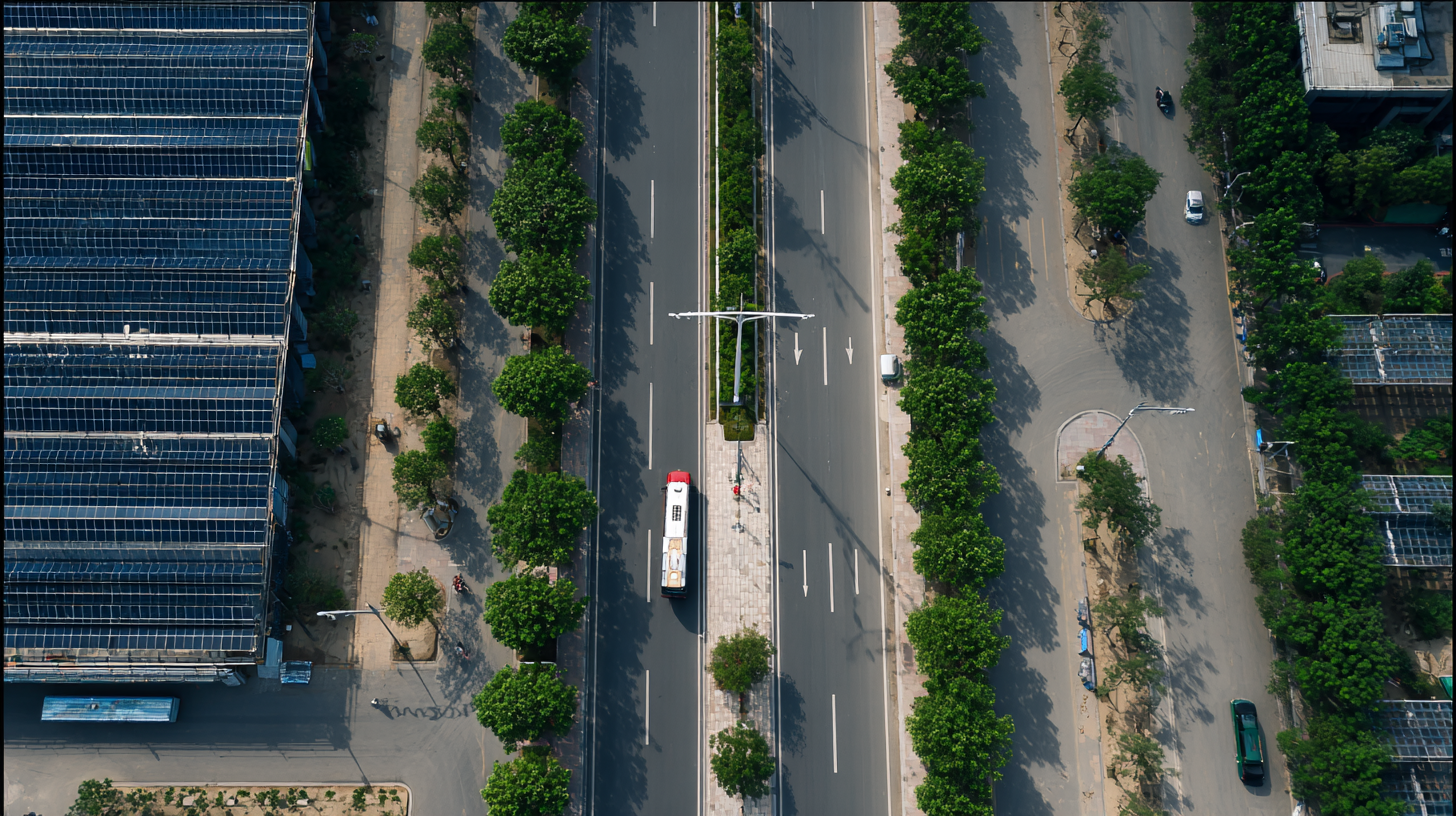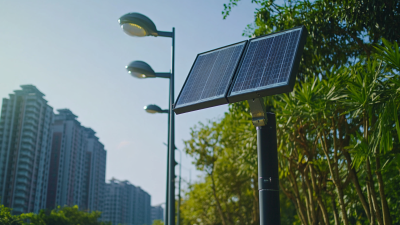Exploring the Growth of Solar Street Lights Industry at the 138th Canton Fair 2025 with Market Insights and Trends
As we approach the 138th Canton Fair in 2025, the spotlight is increasingly on the burgeoning solar street lights industry, a sector that has witnessed remarkable growth in recent years. This year's fair will serve as a pivotal platform for stakeholders to explore the latest innovations, market dynamics, and trends shaping the future of solar street lights. With the rising emphasis on sustainable urban development and smart city solutions, solar street lights have emerged as a viable alternative to traditional lighting systems, offering energy efficiency and environmental benefits.
Participants at the Canton Fair will have the opportunity to engage with industry leaders, uncover new technologies, and identify lucrative investment prospects. This introduction to the 138th Canton Fair provides valuable insights into how solar street lights are redefining public infrastructure while contributing to a greener and more sustainable future.
The Rising Demand for Solar Street Lights in Urban Development
The rising demand for solar street lights reflects a significant shift towards sustainable urban development. As cities worldwide grapple with issues of energy consumption and environmental impacts, solar-powered lighting solutions offer a compelling alternative. This move is not only fueled by growing environmental awareness but also by substantial advancements in solar technology, which have improved efficiency and reduced costs. Urban planners are increasingly recognizing the value of integrating solar street lights into their infrastructure as a means to enhance public safety while minimizing carbon footprints.
Moreover, the integration of solar street lights supports the broader goals of smart city initiatives. With the ability to harness renewable energy, these installations can provide consistent illumination without placing additional strain on the local power grid. The 138th Canton Fair in 2025 will likely showcase various innovations in this domain, highlighting both product developments and emerging trends. Enhanced features such as smart sensor technology and improved battery storage are set to further drive the adoption of solar street lights in urban environments, making them an essential component of modern city planning.
Market Trends Driving Investment in Solar Street Lighting Solutions
The solar street lights industry is gaining significant momentum as a result of increasing investment driven by market trends emphasizing environmental sustainability and energy efficiency. With the global lighting market valued at $139.79 billion in 2023 and projected to reach $367.88 billion by 2032, the shift towards renewable energy sources like solar power is more crucial than ever. This growth is fueled by a rising awareness of climate change and the need for sustainable illumination solutions, which are becoming integral to urban infrastructure.
Recent advancements in technology, particularly in wireless systems and integrated AI and machine learning, are enhancing the capabilities of smart lighting solutions. Features such as adaptive and human-centric lighting are becoming standard, driving demand for solar street lighting systems that not only utilize photovoltaic panels to store solar energy but also integrate smart technologies to optimize energy use. As the industry evolves, the potential for solar street lights to play a vital role in the transition to greener urban environments becomes increasingly clear, making them a focal point of investment at events like the 138th Canton Fair in 2025.
Technological Innovations Shaping the Future of Solar Street Lights
The solar street lights industry has witnessed remarkable growth in recent years, driven predominantly by technological innovations that enhance efficiency and functionality. At the 138th Canton Fair in 2025, a plethora of cutting-edge solutions will be showcased, highlighting advancements such as smart lighting systems equipped with IoT capabilities. These smart solar street lights can adapt to changing environmental conditions, providing optimal illumination while conserving energy. By integrating sensors and real-time data analytics, these systems not only improve safety but also contribute to urban sustainability goals.

Additionally, the incorporation of solar panel technologies that maximize energy capture is reshaping the landscape of urban lighting. New materials and designs are being developed to ensure that solar panels are both efficient and aesthetically pleasing. This trend is reflected in the emergence of more compact and lightweight solar lights, which can be easily installed in various urban settings without the need for extensive infrastructure. As manufacturers continue to prioritize innovation, the solar street lights sector is poised for a significant transformation, aligning with global trends toward renewable energy and smart city initiatives.
Impact of Government Policies on Solar Street Light Adoption Rates
The adoption of solar street lights is increasingly influenced by government policies, which play a critical role in shaping the growth of this sector. Recent industry reports indicate that regions with strong governmental support, such as tax incentives and grants, have witnessed renewable energy solutions expand more rapidly. For instance, according to a study by the International Renewable Energy Agency (IRENA), countries that implemented supportive frameworks saw solar street light deployment increase by up to 35% in just three years. Such policies not only encourage municipalities to invest in sustainable infrastructure but also stimulate innovation in solar technologies.
When attending the 138th Canton Fair in 2025, it's essential to note the prevailing trends regarding these policies. Governments are increasingly prioritizing renewable energy investments, which directly affects adoption rates of solar street lights. Data from the Solar Energy Industries Association (SEIA) shows that as cities implement clean energy goals, there is a projected growth rate of 23% in solar street lighting installations. This trend signifies a robust shift towards sustainability and provides opportunities for businesses in the industry.
Tips: Stay informed about the local and national policies related to renewable energy, as they can significantly impact funding opportunities. Additionally, consider collaborating with government agencies to align your products with compliance standards, which can enhance market reach and drive adoption rates effectively.

Assessment of Market Opportunities and Challenges in the Solar Industry
The solar industry is poised for substantial growth, particularly illustrated by the impressive forecast for the perovskite solar cell market, projected to expand from $101.02 million in 2025 to $1.25592 billion by 2032, reflecting a compound annual growth rate of 43.34%. This trend mirrors the global shift towards renewable energy sources, with countries like Nigeria transitioning to clean and sustainable lighting solutions to combat black carbon emissions. This is vital for the 101 million Nigerians currently lacking access to grid electricity, where the reliance on kerosene lamps and candles prevails, especially in rural regions where only 34% of the population is connected to the grid.
Despite the promising market growth, the solar industry faces several challenges. There are significant barriers to entry, including technological advancements, financing options, and regulatory frameworks that vary greatly by region. Companies like Longi Green Energy have recently expressed a cautious approach to expanding abroad, emphasizing the need for a thorough assessment of opportunities and risks involved in overseas investments. As the industry evolves, understanding these dynamics will be crucial for stakeholders looking to capitalize on the burgeoning market opportunities while navigating the associated challenges.
Exploring the Growth of Solar Street Lights Industry at the 138th Canton Fair 2025
| Parameter |
Value |
| Global Solar Street Light Market Size (2025) |
$2.5 billion |
| Estimated CAGR (2020-2025) |
20% |
| Key Regions for Market Growth |
Asia Pacific, North America, Europe |
| Major Applications |
Parks, Residential Areas, Streets |
| Challenges in the Industry |
High Initial Costs, Technological Limitations |
| Growth Drivers |
Government Initiatives, Environmental Concerns |
| Top Lighting Technologies |
LED, Solar PV Panels |
| Smart Features Adoption Rate |
35% |









